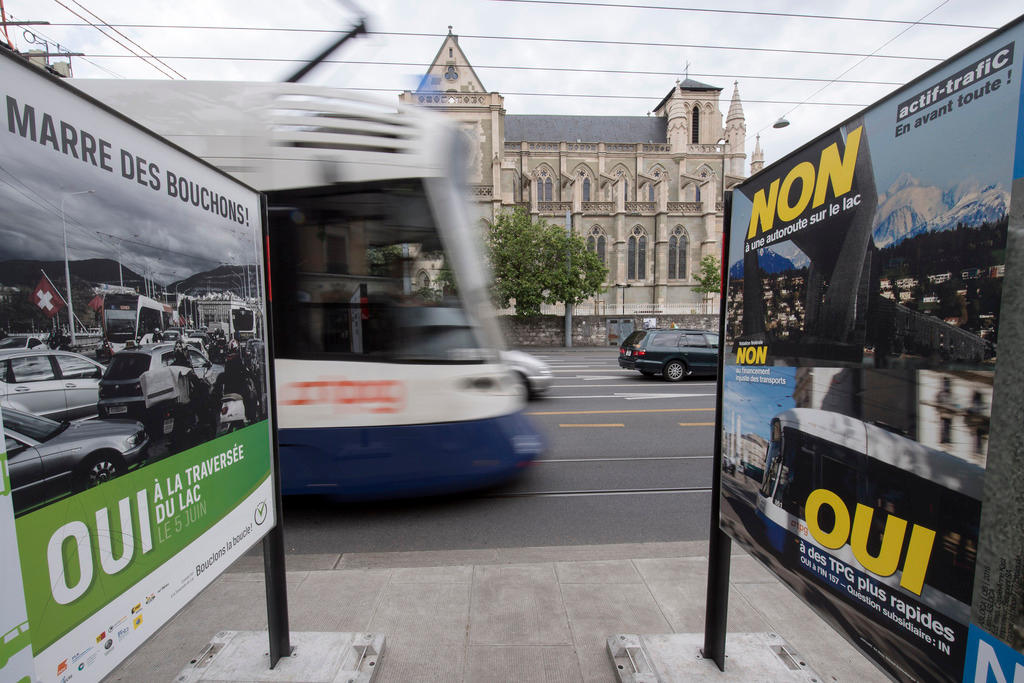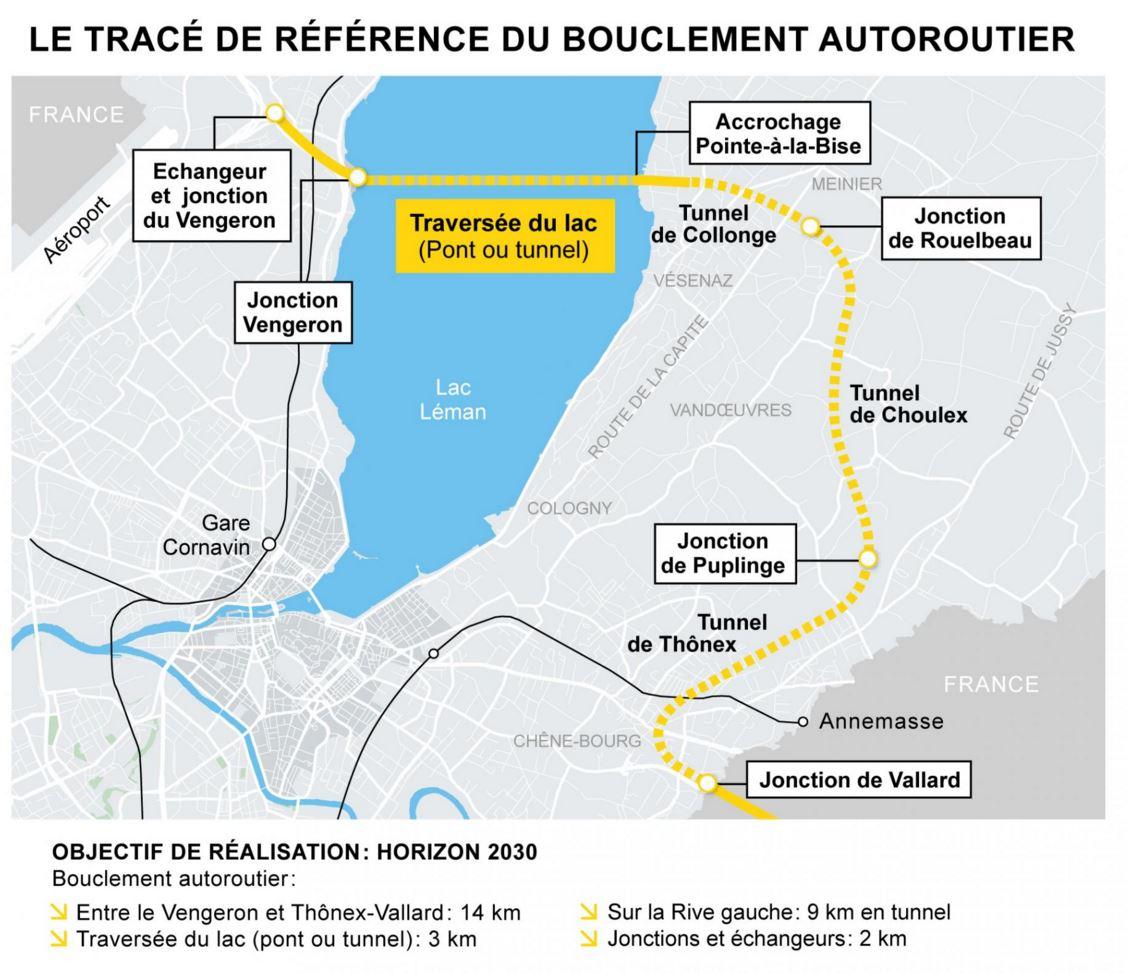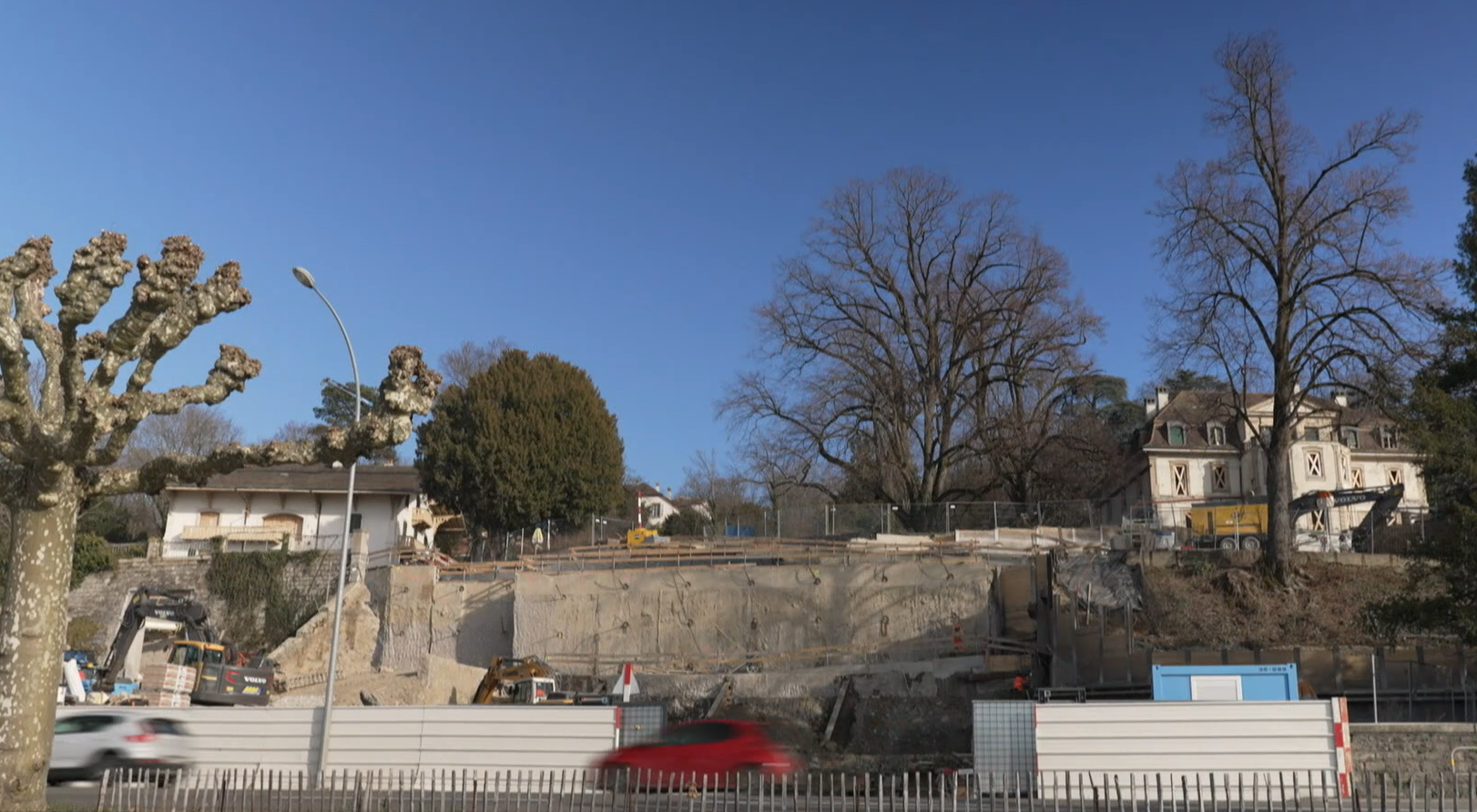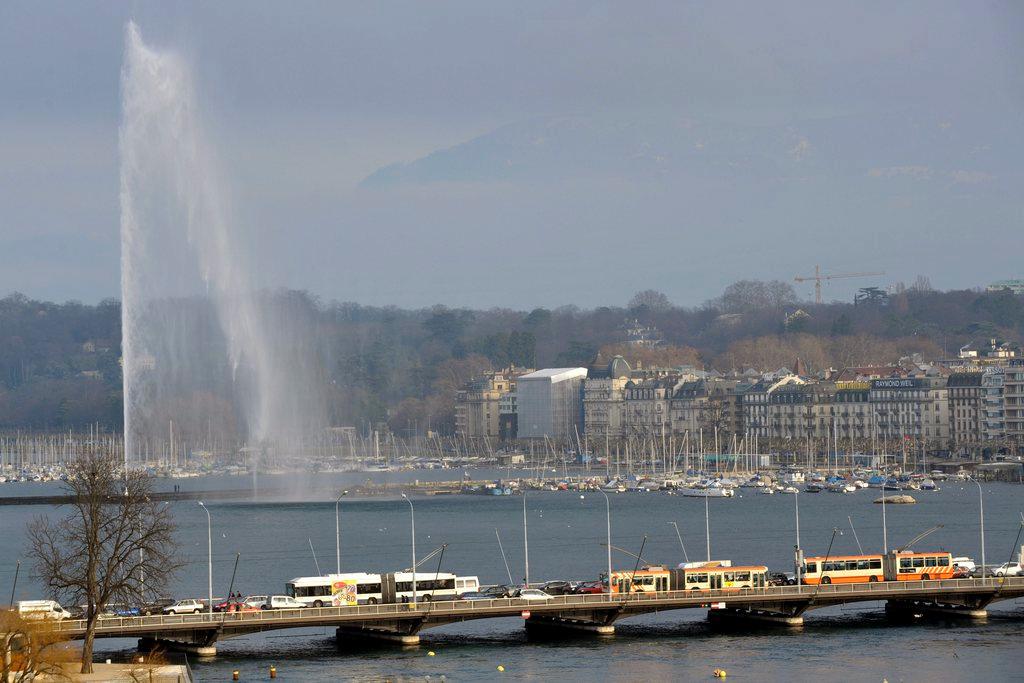Can direct democracy help solve Geneva’s transport problems?

This Sunday Geneva voters will once again decide whether a lake tunnel or bridge should be built to ease chronic transport problems, partly resulting from the region’s steadily growing population.
For the fourth time in 30 years, Geneva citizens are being asked to go to the ballot box to decide if they need a new lake crossing.
An initiative backed by right and centre-right parties, as well as the Touring Club of Switzerland (TCS) motoring association and local entrepreneurs, asks voters to support the principle of a lake crossing – tunnel or bridge – being inscribed into the Geneva Constitution. This would complete a ring road around Geneva. However, they have not presented any specific project details or budget at this stage.
Supporters External linkargue that Geneva suffers from mobility problems which are accentuated by the small territory, a growing population and sprawling development, especially in the suburbs.
Switzerland’s second biggest city is at a busy crossroads with France and the Alps. An estimated 900,000 people live in the city and surrounding region. Every day some 109,000 people commute to work from across the French border and from neighbouring canton Vaud.
With its high salaries and standard of living, Geneva continues to attract a constant flow of people to live and work. By 2040, the population is forecast to grow by 300,000.
“Whether we like it or not the amount of traffic will increase in the next few decades,” declared Guillaume Barazzone, a centre-right Christian Democrat politician and a member of the initiative committee.
He claims that a tunnel and ring road would cut traffic in the city centre and on the regularly snarled up Mont Blanc Bridge – the main lake crossing point – by around 50% and help reduce journey times across the canton by 35%. Traffic noise and air quality would also be improved.
Back again
The new vote comes only two years after the last failed attempt to gain consensus on a road tunnel. In 2014, 63% of voters rejected an initiative to build a 1.5-kilometre road tunnel at the far western end of the lake close to the city’s famous Jet d’Eau fountain. Opponents had described the plan as outdated, too expensive and environmentally unfriendly.
The idea has not gone away, however. In 2014, the centre-right Radical and Christian Democrat parties proposed digging a longer four-kilometre tunnel at a wider part of the lake, which would link up to the cantonal ring road and Swiss-French motorway network by 2030. It could be used by an estimated 70,000-100,000 vehicles a day.
Strangely, the idea of a ring road and a lake crossing – tunnel or bridge – has already been accepted by the cantonal government. They feature in its “Mobility 2030” strategy, approved in 2013, which includes the further development of public transport such as the regional Leman Express train service.
A positive result at the ballot box on Sunday would therefore be an “act of political support” towards the canton in its search for a federal financial contribution, explained Barazzone.

The government plan estimates that CHF3-4 billion ($3-4 billion) will be needed to build a tunnel or bridge, ring road and motorway junctions to the A1 and A40 highways. The idea has the tacit approval of the Federal Roads Office, which says a lake crossing would offer favourable cost benefits.
However, opponentsExternal link, which include various environmental groups, say the initiative would be a huge waste of money, especially at a time when cantonal budgets are tight.
“Traffic is not about plumbing, where a new pipe can make the system more fluid. Any new infrastructure creates additional traffic,” added Thibault Schneeberger, a member of the alternative transport group actif-trafiC.
Valérie de Roguin, from the Environmental Transport Association, felt that greener solutions were available to ease congestion, such as developing the rail and tram networks, building more bike lanes, and encouraging the use of car-sharing and parking zones on the city outskirts.
“Jobs and activities are concentrated in the city centre, which will remain a destination, with or without a lake crossing,” she warned.
Pull-factor
Eight Geneva and French communes have also expressed their opposition to the government’s proposed route for a ring road over fears of increased traffic. The crossing is expected to result in more housing developments, mostly across the border in France.
Will the project get voters’ green light this time round? Pierre Ruetschi, editor of the Tribune de Genève newspaper, recently declared that endless talk about a lake crossing and repeated votes had become “obsessive”.
“Given the history of missed opportunities and endemic state of the traffic, it seems obvious that we need to conclude this ring road business,” he wrote.
The initiative may well get accepted this time, said Ruetschi, but if so, it is important for the pro camp to get a good score to send the right signal to Bern and to any potential investors.
According to a recent Tribune de Genève online poll, 59.2% of voters said they supported the idea of a lake crossing.
Do you live or work in the Geneva region? Tell us what you think.
The question of whether to build a bridge or tunnel in Geneva to help people cross from one side of the lake to the other and ease congestion has been debated for years.
In 1896, painter and architect Albert Trachsel presented a project for a tunnel at the far western end of the lake at the so-called La Rade in Geneva to preserve the lakeside view. In 1943, architect Emile-Albert Favre published a study on the need for a raised bridge. Then in 1945 he revised his plans in favour of demolishing the Mont Blanc Bridge and replacing it with two tunnels.
In June 1988, 68% of local voters agreed in principle to a new lake crossing. However, in June 1996 two-thirds of voters rejected plans to build either a tunnel or a bridge across the lake.
In September 2014, 63% of voters turned down an initiative to construct a 1.5-kilometre-long road tunnel under the lake close to the famous Jet d’Eau fountain.

In compliance with the JTI standards
More: SWI swissinfo.ch certified by the Journalism Trust Initiative










You can find an overview of ongoing debates with our journalists here . Please join us!
If you want to start a conversation about a topic raised in this article or want to report factual errors, email us at english@swissinfo.ch.